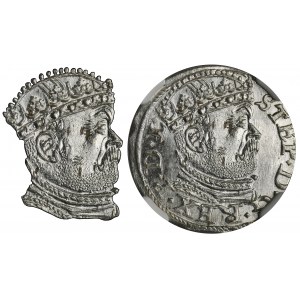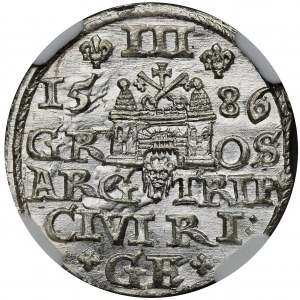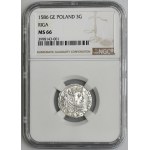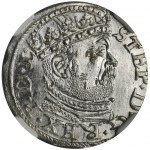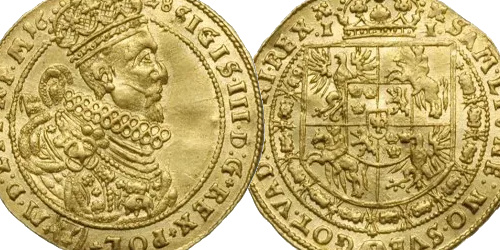A variety with a large head, with a low crown with rosettes, rhomboids as punctuation.
A mint piece with intense luster.
A beautiful coin appreciated with the second highest grade in the NGC registry.
After the great monetary reform of Sigismund the Old, there was a decades-long period of stagnation, which over time turned into monetary chaos. At the threshold of Stefan Batory's reign, coins of the last two Jagiellons were in circulation, as well as foreign coins. It was essential for the new king to put monetary issues in order. Stefan Batory's Great Reform of 1578-1580 is one of the most important in the history of Polish minting. It included, among other things: the issuance of stable and full-value money, the linking of the Republic's monetary system with the imperial system, and the final implementation of the Polish-Lithuanian monetary union. The system introduced in 1580 functioned until the end of Stefan Batory's reign and for much of his successor's reign (until 1601). During the reign of Stefan Batory, the following mints were in operation: crown mints (Olkusz, Poznan), Lithuanian mints (Vilnius), Prussian mints (Malbork), and city mints (Gdansk, Riga). In addition, Lithuanian two-dollars were issued by the Kurland mint in Mitava, while the king had crown thalers and ducats minted at the Transylvanian mint in Nagy Banya. Minting associated with the reign of Stefan Batory also includes Danzig siege coins from 1577.
